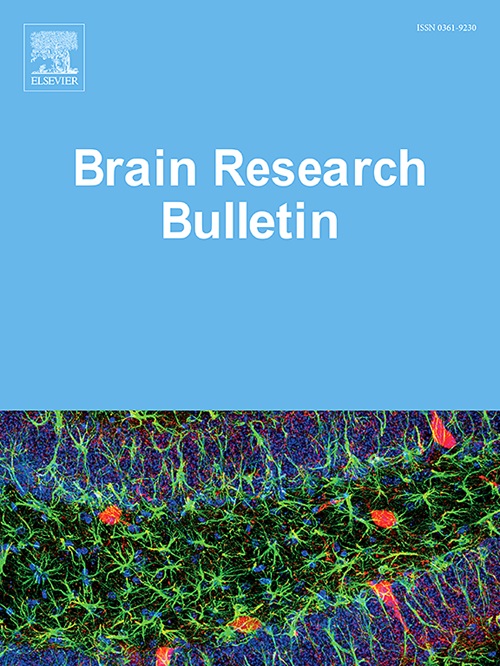MO-GCN:用于精神分裂症判别分析的多组学图卷积网络。
IF 3.5
3区 医学
Q2 NEUROSCIENCES
引用次数: 0
摘要
基于多组学数据的机器学习方法已被广泛应用于精神分裂症的判别分析,但这些研究大多忽略了多组学网络的合作相互作用和拓扑属性。在这项研究中,我们为每个个体构建了三种类型的脑图(BGs),三种类型的肠图(GGs)和九种类型的脑肠组合图(bgcg)。我们提出了一种新的多组学图卷积网络(MO-GCN)方法,该方法采用注意机制,通过整合所有的多组学图卷积网络来构建分类模型。我们还使用Topk池化层确定了重要的大脑和肠道特征,并分析了它们与阳性和阴性综合征量表(PANSS)和matrix共识认知电池(MCCB)评分的相关性。结果表明,使用bgcg的新型MO-GCN模型优于使用BGs或GGs的GCN模型。其中,经5倍交叉验证的最佳模型准确率达到84.0%。可解释性分析表明,前10个重要的大脑特征主要来自海马体、嗅觉、梭状回和白球,它们涉及大脑的记忆、学习和情感系统。前10个重要的肠道特征主要来自Dorea、Ruminococcus、Subdoligranulum和Clostridium等。此外,重要的大脑和肠道特征分别与PANSS和MCCB评分显著相关。综上所述,MO-GCN可以有效地提高分类性能,并为理解精神分裂症提供潜在的肠道微生物群-脑视角。本文章由计算机程序翻译,如有差异,请以英文原文为准。
MO-GCN: A multi-omics graph convolutional network for discriminative analysis of schizophrenia
The methodology of machine learning with multi-omics data has been widely adopted in the discriminative analyses of schizophrenia, but most of these studies ignored the cooperative interactions and topological attributes of multi-omics networks. In this study, we constructed three types of brain graphs (BGs), three types of gut graphs (GGs), and nine types of brain-gut combined graphs (BGCGs) for each individual. We proposed a novel methodology of multi-omics graph convolutional network (MO-GCN) with an attention mechanism to construct a classification model by integrating all BGCGs. We also identified important brain and gut features using the Topk pooling layer and analyzed their correlations with the Positive and Negative Syndrome Scale (PANSS) and MATRICS Consensus Cognitive Battery (MCCB) scores. The results showed that the novel MO-GCN model using BGCGs outperformed the GCN models using either BGs or GGs. In particular, the accuracy of the best model by 5-fold cross-validation reached 84.0 %. Interpretability analysis revealed that the top 10 important brain features were primarily from the hippocampus, olfactory, fusiform and pallidum, which were involved in the brain systems of memory, learning and emotion. The top 10 important gut features were primarily from Dorea, Ruminococcus, Subdoligranulum and Clostridium, etc. Moreover, the important brain and gut features were significantly correlated with the PANSS and MCCB scores, respectively. In conclusion, the MO-GCN can effectively improve the classification performance and provide a potential gut microbiota-brain perspective for the understanding of schizophrenia.
求助全文
通过发布文献求助,成功后即可免费获取论文全文。
去求助
来源期刊

Brain Research Bulletin
医学-神经科学
CiteScore
6.90
自引率
2.60%
发文量
253
审稿时长
67 days
期刊介绍:
The Brain Research Bulletin (BRB) aims to publish novel work that advances our knowledge of molecular and cellular mechanisms that underlie neural network properties associated with behavior, cognition and other brain functions during neurodevelopment and in the adult. Although clinical research is out of the Journal''s scope, the BRB also aims to publish translation research that provides insight into biological mechanisms and processes associated with neurodegeneration mechanisms, neurological diseases and neuropsychiatric disorders. The Journal is especially interested in research using novel methodologies, such as optogenetics, multielectrode array recordings and life imaging in wild-type and genetically-modified animal models, with the goal to advance our understanding of how neurons, glia and networks function in vivo.
 求助内容:
求助内容: 应助结果提醒方式:
应助结果提醒方式:


